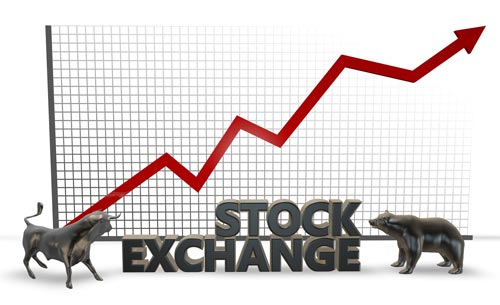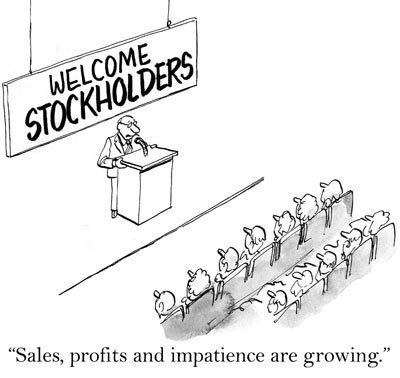More
Selling short thus gives protection against a downturn in a securities exchange, but it is also associated with a significant risk. If the market price of the shares goes up, you will be obliged to buy them back at a higher price than what you sold them for. You will then suffer a loss which corresponds to the difference between the price you sold the shares for and the cost of buying them back. The loss can quickly become substantial and may even be greater than your initial investment for borrowing and shorting the shares. It is especially risky to short shares in a company which is a candidate for a takeover or a buy-out.
In theory the loss can be unlimited. Compare that with the alternative of your buying shares and in the worst case they become valueless. In this case, your loss is limited to your investment - there is thus an upper limit for losses in ordinary share transactions.
In order both to monitor the profit and to minimize the risk, you should choose a share with high turnover (liquidity). You want to be able both to sell and to buy the shares quickly. Shares with low turnover increases the risk, since it can be difficult to buy back the shares if the price rises rapidly.
You cannot short all of the shares that are traded on a securities exchange. Only certain selected shares can be shorted, most often shares in larger listed companies with large turnover (high market liquidity). Examples of those who lend out shares are mutual funds run by the banks, insurance companies and pension funds. Shorting of shares is accomplished through brokers in the same way as with trading in shares generally. Large "borrowers" are, among others, hedge funds, asset managers, mutual funds and, to some extent, even individual persons.
Example
Assume that you have €10,000 to invest in shares. You can choose to buy shares for €10,000 or to "short" for €10,000 (costs for commissions, fees and interest to the lender of the shares). You choose to short (since you believe that the market price of the shares is going to fall) and your €10,000 is sufficient to borrow 10,000 shares. Later you sell the borrowed shares on the securities exchange at that day's market price of €5 per share, which gives you an income of €50,000.
Your judgment proves to be correct and the share price falls to €3 per share. Now you choose to buy back the 10,000 shares for €30,000 and return the shares to the lender. Your profit on the "short sale" is €50,000 –€ 30,000= €20,000 before any taxes that may be involved. You have thus invested €10,000 and made a profit which is twice as large as your investment.
But if you are wrong and the share's market price instead goes up to €8 your cost to buy back the shares will be €80,000. Now you will suffer a loss of €30,000, which is three times more than your initial investment of €10,000. By selling short you can thus lose more than what you invested. You must thus be on your guard and quickly buy back the borrowed shares if the market price rises. Compare this with the alternative where you buy shares for €10,000 and the shares, in the worst case become worthless, then your loss is limited to your investment, that is, to €10,000.
Advantages of selling short:
- You can profit if the securities exchange goes down or the market price of a particular share falls.
- You can, with not much capital, increase your return on investment since it is cheaper to borrow shares than it is to purchase shares.
Disadvantages of selling short:
- If the share's price goes up you will suffer a loss, and you may even lose a larger amount than you invested.
- You must be very alert, experienced and know the financial markets, since the risk in your investment portfolio rapidly increases.
As said, with short selling you can balance your risk and earn money also even if the market price for a particular share goes down. But there are many critics of short selling. But there are many critics of short selling. Some think that short selling results in larger price downturns and increases the uncertainty (volatility) in the share's market price. They also think that hedge funds with large capital can create a sell pressure on the share's market price by means of short selling and thereby push the market price down before the buy back. When the shares are then bought back the share's market price increases again. The device of first selling and then buying large volumes produces increased swings in the share's market price without the company's underlying value having changed.
Proponents, for their part, maintain that the advantages outweigh the disadvantages and that short selling is an important device for increasing the average return on the investors' total capital. They also think that the volatility (the market swings) in the portfolio can be minimized by the investors to some extent being able to protect themselves to some extent against securities exchange downturns.

















